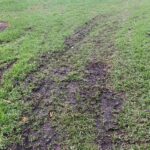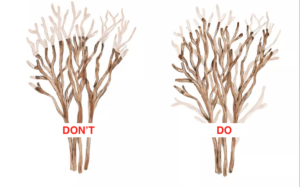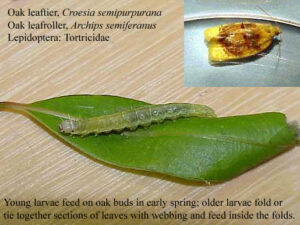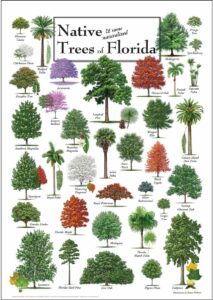Tree removal is not a straightforward undertaking. One has to set aside a considerable amount of time to understand all the key factors involved. These include:
- Tree condition.
- Size and parts of the tree to be removed.
- Location of the tree.
- Risk and difficulty.
- Client expectations.
- How much debris will be generated, and does it need to be removed from the property?
- Stump removal or grinding.
- Tree removal contractor overhead. (Maintenance of equipment etc.)
- Drive times and factors influencing it.
These are not necessarily in any order which has more influence on price than the other.
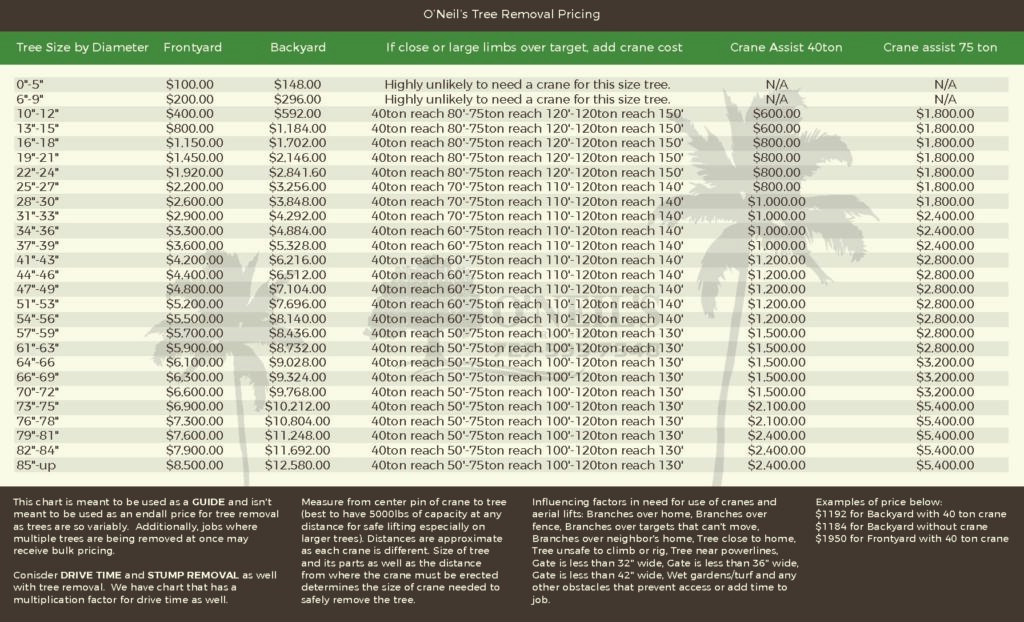
The above chart represents a range of prices based on averages from data we have collected over the last two years. However, it doesn’t necessarily account for the factors above and can be off by thousands. What does it cost to remove a tree? Read on to learn more.
Factors that influence tree removal price
#1: What condition is the tree in?
Most trees marked for removal may have reached a point where the tree owner believes that the function and benefits of the tree(s) have diminished to the point where the tree owner is considering removal. That often has to do with the tree’s overall condition or the use of the property as it relates to the tree.
For example, the tree owner would like to build a new structure or the tree is dropping too many leaves, and the tree owner has decided that they would have more benefit or enjoyment from the property if the tree wasn’t there.
Most tree care operations are estimated (priced) based on how much time the task will take. Equipment wear and tear, equipment required to do the work, drive time to and from the site, and difficulty as more experienced crews capable of completing more difficult jobs cost more to operate.
If the tree’s condition has declined to the degree where the tree is a bit unsafe to climb and rig* down, it can become more time-consuming to safely remove the tree parts. In addition to taking more time, it will likely require a more skilled crew to perform the task at hand.
Furthermore, the tree may have declined to the point where it cannot be safely climbed and removed using traditional rigging methods. In that case, it may need special equipment to safely remove the tree, such as cranes, bucket trucks, lifts, or other machinery or techniques that would reduce the risk of injury to tree care workers and or the property to an acceptable level. So to recap, the condition of the tree can add costs to tree removal. The best way to avoid this is to regularly inspect your trees by a tree expert and perform tree pruning to ensure you are not getting into this situation.
*Rig – to use blocks and tackle type devices, ropes, and other winches designed to lower tree section from the canopy to the ground in a controlled manner.
#2: The tree size and range of its parts
The tree’s size and range of parts dictate the process used for removing it. Size also influences the equipment that can be used, the skill level required from the crew, and the time taken to remove the tree.
Consider this example. If you’re going to move a plastic Rubbermaid shed from the back yard to the front yard, it is a task, but can be done fairly quickly as it is small (you might be able to carry it in one piece) and it breaks down very quickly into even smaller parts which can be easily moved. Additionally, as it is fairly light and small, the risk of damage to the property is low, and it can be done with less skilled individuals who have less cost to employ. The equipment required is very little, if any, as this type of shed snaps together.
Conversely, If you were going to move a house from one side of the yard to the other, it would be a much different picture. You would need many skilled crew members, you would need a lot of equipment, including basic carpentry tools, cranes, jacks, trailers, and you would need lots of time. The more skilled the crew, the less time it would take to accomplish such a task. The better and stronger the equipment, the less time it would take. Additionally, the more you have to break it down into smaller sections, the more time-consuming it will be.
That is the same situation with tree removal. The size and range of parts to be removed are major factors due to the influence on the elements listed above. The larger the tree and its parts, the more the cost.
#3: Where is the tree located?
The tree’s location is a major factor in determining the price or cost of removing it. If the tree is located near a road that is easily accessible with heavy equipment and there are no obstacles such as traffic and power lines, this tree will cost less to remove than the same tree which has obstacles such as traffic and power lines. Conversely, a tree that is growing in the backyard that only has two feet to pass by a fence or buildings in which to get the tree and its parts out to an area in which larger equipment can help to handle the parts adds more time and more wear and tear on men. That is generally going to require much more manual labor than the tree near the street.
Additionally, if this tree is 60″ in diameter with a huge canopy, growing in a backyard 900 yards from the road, 1′ from high voltage power lines, 1′ from a valuable building, a prize rose garden that includes $250,000 in industrial art is under the canopy, a tight area only 2′ wide in which to move debris out to the road to be handled and the client wants it to look like the tree contractor was never there when they are done, this is going to cost a considerable amount more money than the same sized tree by the road with no obstacles. This tree is in a location that does not bode well for a low price.
The tree’s location is very much a critical factor in determining price. The more inaccessible the tree is, with factors that create more labor and time on the job, the higher cost.
#4: How difficult or risky is the tree to remove?
The risks and difficulty of removing a tree are often overlooked and misunderstood factors playing into the price. In the example above, the tree is near valuable buildings, near power lines, and the canopy is over a prize rose garden and has a lot of risks and is very difficult to pull off. However, suppose the client is demolishing all the buildings on the property. In that case, the power line will be removed or turned off, making the risk and difficulty go way down.
If you have been wondering what is the cost of tree removal, here is a detailed explanation. A job with very little risk and difficulty can be done much more quickly than a tree with all the factors like the one above. That could be the difference between one day on the job or an entire week. Yes, the price is greater on such a job, but the risks and difficulty level may not be worth the reward. Let’s say that the tree in the example above with all the obstacles costs $20,000 and takes five days to remove, but a similar sized tree with very little risk and a very little difficulty level could be removed in one day for $4,000. Why take the job for $20k with all the risk and difficulty at that dollar value as all it takes is a little damage to the property (this would cost money to fix and take away from the profit) or worse, someone could be killed or injured much more easily on the $20k, and the risk won’t pay off. It would be better to find more of the $4k jobs than to mess with the $20k job in this example.
The risk and difficulty can be major contributors to the price of tree removal. The more difficult and the more risk, the more you will likely pay to remove the tree.
#5: What do you expect the property to look like once the tree removal is complete?
Client expectations are often overlooked when people research how much does it cost to remove a tree. Often, if a tree care estimator/consultant doesn’t ask the right questions, they may not get the client’s expectations for every detail of the job. The client and estimator must discuss all questions and concerns regarding the tree removal in depth.
A tree owner must discuss what needs to happen on the property in the future. For example, it is wise for a tree owner to voice if they would like to plant a new tree near or in the same spot as the existing tree. This way, the tree care contractor can grind the stump deep enough or excavate the stump to accommodate the installation of a new tree. If the tree owner wants to have a flat yard with no humps and the area has a large hump due to the tree, they should voice this. Not handling this when the tree service contractor or tree surgeon is on the property will likely cost a lot more money and potentially leave the client disappointed because they thought the humped area would be handled even though it wasn’t discussed. A good tree care estimator/consultant will ask questions about what the future plans are with the area and address those in the proposal.
In addition to handling the area where the tree was, so it meets the expectations of the tree owner, they may have a very nice property or have expectations regarding its current condition. With the right equipment and a skilled crew, it is possible to remove a tree and have the property still look like no one was ever there. It is also possible to restore the area to how it looked prior to the tree removal if the tree can’t be removed without some ugly site damage. However, this will cost additional as it will take extra time and money to ensure this occurs. Sometimes a client who wants the lowest price is okay with lots of collateral damage to the property, such as rutting, divots, torn up grass, damaged plants, and bushes. However, the tree contractor must evaluate if they are willing to do a job that damages the client’s property to this degree as a neighbor passing by won’t know that this conversation occurred. The passing neighbor may look like the tree service did a poor job and cared nothing for the client’s property.
It seems that people who have invested significant amounts of money into their landscaping and hardscaping understand the cost of having their property beautified and do not want to have to spend the money to fix things they know are expensive to install. That is especially the case these days as it is very hard to find a contractor willing to do tedious little repairs such as sod and irrigation repairs for a reasonable price. It is very inconvenient to hunt down a contractor who will take on such a job.
Understanding the expectations from a client or tree owner is a very important factor in the cost of tree removal. Often people will create their expectations, and if these aren’t understood, there is no way to know if they are realistic or not. Many times a client or tree owner may have unrealistic expectations that they created. The client and tree contractor must discuss realistic expectations to ensure the job becomes a positive experience for all. If the expectations are clearly stated, the results are more likely to be positive with less cost to account for later on. It always costs more to address these problems once the contractor has left the property, as the tree service will have to make another trip out to the property. Additionally, it will likely cost more to have another contractor handle what could have been handled by the tree care company while they were on site.
#6: How much debris will be generated, does it need to be removed from the property, and what is the cost to dispose of such debris?
To conclusively evaluate what does it cost to remove an oak tree, you need to discuss debris handling. In most cases, people burn wood for heat or campfires, so you may want to keep some wood for this. Other times you may want to handle the debris on your own to save money. Alternatively, you would prefer not to burn wood or do anything other than pay for an all-inclusive service.
Larger trees cost more to dispose of if you haul them to a green waste recycling facility, but they require more expensive larger equipment that can handle larger debris. If you don’t have the equipment to handle the larger debris from the tree removal, it forces more labor and ultimately contributes to more cost once again.
#7: Do you need or want the stump ground out or excavated?
Some people don’t mind leaving stumps around their property. That is especially the case on larger acreage properties as the stumps are less likely to cause inconveniences or within the owner’s vision. Often, if the stump is on a smaller lot where it is much more visible or in the way of the function of the property, people will want this stump out. If the tree owner/ property owner wants to replant a tree or other plants in the same area, they may want the stump gone. If it’s in the front yard and they don’t like the way it looks, they may want the stump out.
There are many reasons why a stump may need to be ground out with a stump grinder or excavated out with an excavator, but ultimately what you want to do with the area and what method you would like to use will be a determining factor in the price of tree removal.
Always consider the stump in the tree removal so you can decide if this will be an extra cost in removing a tree.
#8: Is the tree removal provider hiring a professional well-managed business or is it more of a one-man show?
Many tree removal providers are very good at their job. However, their cost to perform the work is likely much less than a professionally run and managed business. A professionally run and managed company will pay attention to the future and grasp the true costs to run and manage a tree care company. This company will help within the community to educate community members and other companies on the importance of trees and their contribution to our future and future generations in this community. This company will have reserve accounts in case of slow payments, economic downturns, and more. This company will have a building fund to ensure growth and eventual management positions for its staff to step into. This company will have taxes to pay and so will need to set aside money for this. This company will have money allocated to marketing and advertising and likely another critical account such as equipment and auto repairs so that their equipment remains in safe and effective running condition. This company will be looking at how to ensure their employees are happy, as this has a lot to do with how they will treat the company’s customers.
Additionally, such a company will pay all their employees using a paycheck in which taxes, social security, and Medicare are being deducted. Equipment breaks down and adds time to jobs, equipment needs to be replaced as it wears out, employees get sick, and a company such as this may provide healthcare and other benefits to its employees. Such a company will also likely have training and education programs to ensure their employees serve their clients with the most up-to-date scientific information. That will result in better results regarding your trees.
Such a company is likely to have a safety and health program to ensure their employees have all the proper safety gear and have been trained to safely and efficiently perform their duties. These programs cost money to administer, and generally, safe practices can eat at a time on the job a little to ensure that everyone goes home at the end of the day. A company like this will generally have a better contribution to our communities as their employees are less likely to end up on welfare or other social systems, which you (as a tax-paying citizen) are ultimately paying for anyway. Multiple crews and administrative support staff, consultants/estimators, bookkeepers, managers, and other important staff that help the business run smoothly and deliver exceptional customer service have overhead costs.
Companies that are not paying attention to such factors do not have the same operational costs as they are not thinking about all of this. Most purchasers of our services and products work for or with companies who share many of the same attributes as we do, and we would hope you would like to contribute to such a team. A team or business mentioned above is more likely to have happy employees and is likely to have longevity, and you can rely on them in the future.
#9: How long does it take to get to and from the job site?
What does it cost to remove a maple tree must also be viewed from a human resource perceptive. If production employees are to be legally paid a salary, this would be less of a factor. Unfortunately, production employees are not legally to be paid a salary in this country and state. They must be paid hourly by law. Anything over 40 hours per week on the clock is legally supposed to be paid at a time and a half. This law is in place to ensure that such workers are not taken advantage of.
In the tree removal business, there are often things that come up that lead to more hours clocked in and the time it takes to drive from one job site to another. It often happens where the time it takes to complete a job is underestimated, and drive time isn’t even considered. Pinellas county can take an hour and a half to drive 15 or 20 miles. That translates into 3 hours when the employee is clocked in and not producing. Unfortunately, this is the cost to do business in Pinellas county, and it must be accounted for one way or another. A company cannot pay its guys less when driving versus on the job.
Another factor that doesn’t necessarily have anything to do with drive time is the loss of production during driving. If a tree removal company could keep its drive times less and spend more time on the job, gross revenue would increase. Many costs of a tree care company are fixed, and production must be maintained in order to stay viable. That means that it is critical to make sure that hours are being billed for no matter what, especially since the company gets no break in its costs during drive time other than some small engine wear and tear reduction in cost.
Conclusion
There are more factors that influence the price/cost to remove a tree. The ones discussed here are the most influential. Hopefully, this article has helped answer your questions about tree removal costs. It is very hard to estimate the cost of any tree removal without considering all the above factors. That explains why most tree removal contractors aren’t willing to give a price to remove a tree without seeing the tree, the site, and having a thorough conversation with the tree owner.



